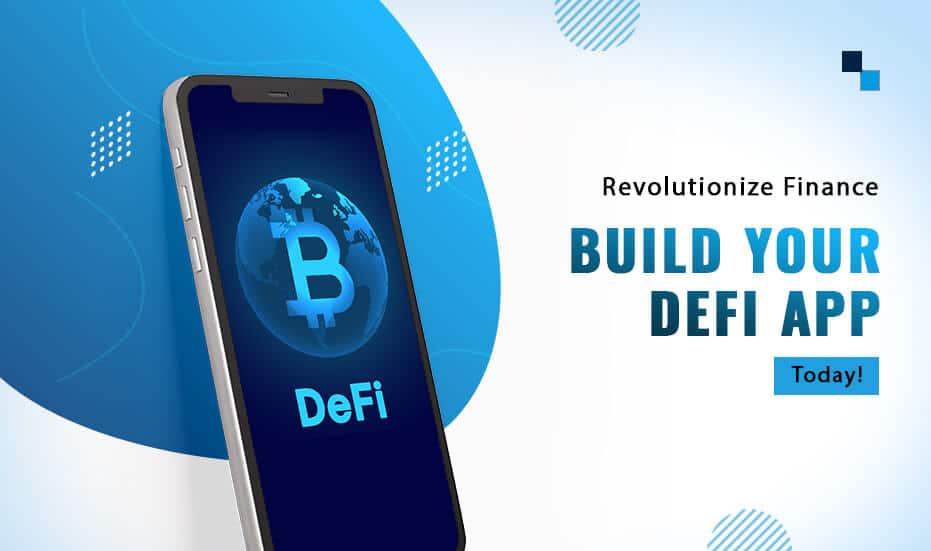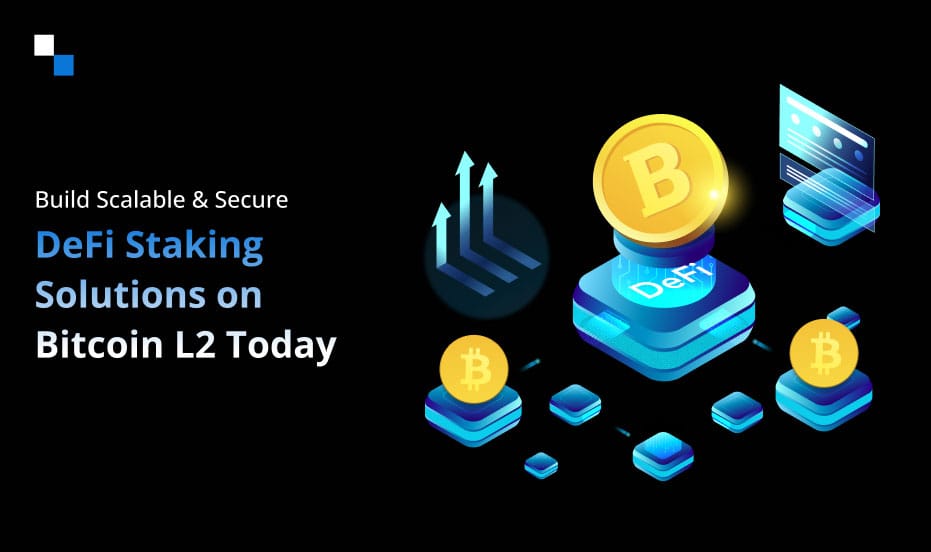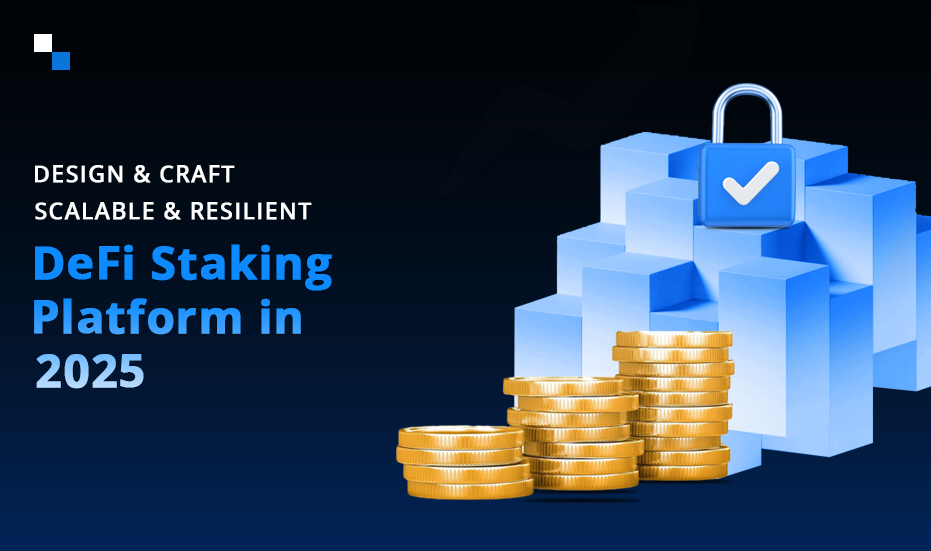Decentralized Finance (DeFi) has emerged as a game-changing trend in the financial industry. It provides open and inclusive financial services to users worldwide. If you’re looking to capitalize on this growing market, you need to create a DeFi app. In this blog, we will provide a comprehensive step-by-step guide on how to create a DeFi app, benefits, and how much does it cost to build a DeFi app.
How To Build a DeFi App?
DeFi application development requires careful planning, technical expertise, and a deep understanding of the DeFi ecosystem. By following this step-by-step guide, you can embark on an exciting journey to build a cutting-edge DeFi app that revolutionizes the financial landscape and provides users with open and inclusive financial services. Embrace the power of decentralized finance and contribute to the future of finance. Let’s dive in!
Step 1: Identify Your DeFi Use Case
The very first step is to identify the specific DeFi use case you want to address with the app. It could be decentralized lending and borrowing, decentralized exchanges, yield farming, or any other DeFi application. Understanding your target use case will help shape the functionality and features of your app.
Step 2: Define Your App’s Features and Architecture
Based on your chosen use case, define the core features and functionalities your app will offer. This may include wallet integration, smart contract development, liquidity pools, automated market makers (AMMs), lending protocols, or yield optimization strategies. Design the overall architecture of your app, considering factors like scalability, security, and interoperability.
Step 3: Choose the Blockchain Platform
Select a suitable blockchain platform to build your DeFi app. Ethereum is the most popular choice due to its established ecosystem and smart contract capabilities. However, consider other platforms like Binance Smart Chain, Polkadot, or Solana, depending on your specific requirements.
Step 4: Smart Contract Development
Develop smart contracts that power the core functionality of your DeFi app. These smart contracts will automate the execution of various financial transactions, ensuring trust and transparency. Solidity is a commonly used programming language for Ethereum smart contracts, while other platforms may have their own programming languages.
Step 5: Develop the User Interface (UI)
Create an intuitive and user-friendly UI for DeFi app development. It will enable users to interact seamlessly with your app’s functionalities. Consider using modern frontend frameworks like React.js or Vue.js for building an engaging and responsive user interface.
Step 6: Implement Security Measures
Security is paramount in DeFi. Conduct thorough security audits of your smart contracts to identify and address vulnerabilities. Implement security best practices, including code reviews, secure key management, and rigorous testing. Consider engaging with third-party security auditors to ensure the robustness of your app’s security measures.
Step 7: Integrate Wallets and APIs
Integrate popular cryptocurrency wallets like MetaMask or Trust Wallet to enable users to connect their wallets with your app. Implement APIs to interact with blockchain networks, fetch real-time data, and execute transactions. Ensure proper encryption and authentication mechanisms to safeguard user data.
Step 8: Test and Deploy
Thoroughly test your DeFi app across various scenarios and user interactions. Conduct both functional and security testing to ensure a smooth user experience and identify any bugs or vulnerabilities. Once satisfied with the testing results, deploy your app on the chosen blockchain platform.
Step 9: Community and Marketing
Building a vibrant community around your DeFi app is crucial for its success. Engage with users, provide support, and actively seek feedback for continuous improvement. Implement marketing strategies to raise awareness about your app, leveraging social media, forums, and partnerships within the DeFi ecosystem.
Step 10: Iterate and Upgrade
The DeFi development space is dynamic, and user requirements evolve rapidly. Continuously monitor user feedback and market trends to identify areas for improvement and new features to implement. Regularly upgrade your app to enhance security, scalability, and user experience.

Types of DeFi Apps
There are many different types of DeFi apps, but some of the most popular include:
Decentralized Exchanges (DEXs)
DEXs allow users to trade cryptocurrencies without the need for a centralized exchange. DEXs use smart contracts to facilitate trades, which means that there is no need for a third party to verify or approve transactions. This makes DEXs more secure and efficient than traditional exchanges.
Lending and Borrowing Platforms
Lending and borrowing platforms are popular in the DeFi development space; they allow users to lend and borrow cryptocurrencies to each other without the need for a bank. These platforms use smart contracts to store and manage user funds, which means that there is no risk of fraud or theft. Lending and borrowing platforms offer users a way to earn interest on their cryptocurrencies or borrow cryptocurrencies when they need them.
Stablecoins
Stablecoins are cryptocurrencies that are pegged to a fiat currency, such as the US dollar. This means that the value of a stablecoin is always equal to the value of the underlying fiat currency. Stablecoins are used to provide stability in the DeFi market, and they are also used to facilitate payments and trade.
Yield Farming
Yield farming is a process of earning rewards by providing liquidity to DeFi protocols. Liquidity providers make their cryptocurrencies available to be borrowed by other users, and they are rewarded with interest payments. There are some yield farming apps that are helping users to earn passive income in the DeFi space.
Insurance Protocols
Insurance protocols allow users to insure their DeFi assets against hacks and other losses. Insurance protocols use smart contracts to collect premiums from users and to pay out claims when losses occur. Insurance protocols offer users a way to protect their DeFi assets from risk.
Derivative Markets
Derivative markets allow users to trade derivatives, such as futures and options, on DeFi protocols. Derivatives are financial instruments that derive their value from an underlying asset. Derivative markets offer users a way to hedge against risk and speculate on the future price of assets.
NFT Marketplaces
NFT marketplaces allow users to buy, sell, and trade non-fungible tokens (NFTs). NFTs are unique digital assets that are stored on the blockchain. NFT marketplaces offer users a way to buy and sell NFTs, as well as to view and collect NFTs.
Benefits of using DeFi apps
The popularity of DeFi application development has been rising because of many benefits of DeFi apps, including:
Decentralization
DeFi apps are decentralized, which means that they are not controlled by any one entity. This makes them more resistant to censorship and fraud.
Transparency
DeFi apps are transparent, which means that all transactions are recorded on the blockchain. This makes it easy to track your finances and to audit the apps for security vulnerabilities.
Cost-effectiveness
DeFi apps are often more cost-effective than traditional financial services. This is because they do not require the same level of infrastructure and overhead.
Accessibility
DeFi apps are accessible to anyone with an internet connection. This means that you can use them to manage your finances, regardless of your location or financial status.
How Much Does It Cost to Build a DeFi app?
The cost of building a DeFi app can vary depending on a number of factors, including the complexity of the app, the experience of the development team, and the blockchain platform used.
Here are some of the factors that can affect the cost of building a DeFi app:
- Complexity: The more complex the app, the more time and resources it will take to develop. For example, an app that allows users to lend and borrow cryptocurrencies will be more complex than an app that simply allows users to track their cryptocurrency portfolio.
- Experience of the development team: A team of experienced developers will be able to build a DeFi app more quickly and efficiently than a team of less experienced developers.
- Blockchain platform: The cost of building a DeFi app will also vary depending on the blockchain platform used. For example, Ethereum is the most popular blockchain platform for DeFi apps, but it is also the most expensive. Other blockchain platforms, such as Solana and Cardano, are less expensive to develop on.
Here are some tips for reducing the cost of building a DeFi app:
- Choose a simple app: The simpler the app, the less time and resources it will take to develop.
- Hire an experienced development team: A team of experienced developers will be able to build a DeFi app more quickly and efficiently.
- Use a less expensive blockchain platform: There are a number of blockchain platforms that are less expensive to develop on than Ethereum.
It is important to note that the cost to create a DeFi app is not the only factor to consider. The time it takes to develop the app and the quality of the app are also important factors. By carefully considering all of these factors, you can build a DeFi app that is both affordable and high-quality.

Final Words
DeFi development has taken the world by storm. With its many benefits and use cases, DeFi apps are here to stay. Hope this step-by-step DeFi app development guide helps you in your DeFi app endeavors.
Are you looking for a reliable DeFi application development company? Get in touch with Antier to build a robust, secure, and flexible DeFi app!





